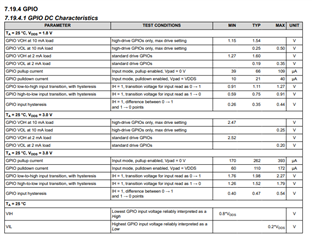Other Parts Discussed in Thread: LP-EM-CC2340R5
Tool/software:
Hi, TI Team.
In the datasheet, there are conditions for the duration of the signal, but no conditions for the signal level.
At what voltage level will the signal trigger a reset?
Additionally, please let me know if there are any constraints regarding hysteresis and the rise time when resetting returns.
Regards.






